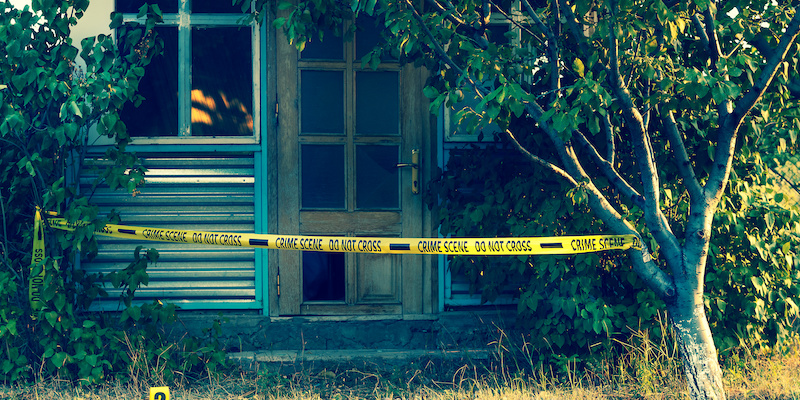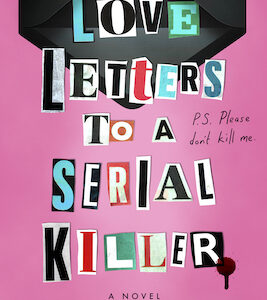Sudden Death is a dirty business.
It touches you, and there’s no rubbing it off. Scrub until you bleed. No dice—it remains. Maybe that’s why I keep writing about it.
A Southern California summer in ‘93. I remember blades of grass on the bottoms of my feet. Morning dew between my toes, and sunshine on my freckled nose. I remember sugar donuts and a Nerf football—my cousin tossing me touchdown passes on his front lawn. Your general and expected summer morning for summer kids in a tract home neighborhood. My perfect life…enjoying the piss out of being a kid.
And then an odd sight: A woman wandering down the street, her glasses slightly askew. A dazed look on her face. I think—if I can recall—she was barefoot and wore a slight smirk. Guarding some curious hidden thought, perhaps. I know this woman. I can hear her voice, though she says nothing.
This was suburbia in Cathedral City, California. The neighboring city to Palm Springs, where I was born and raised for much of my boyhood. Red tile roofs and beige stucco homes. Threats numbered few beyond the odd fender bender or a whiff of dope.
The woman—and I’m watching her now with my cousin and my mom and aunt—is the principal at my school, Sunny Sands Elementary. Her name is Molly Schecter and she has, moments before, made a terrible discovery. I could be wrong, I was such a little kid back then, but I recall something my mom said: “She looks like she’s in shock.”
And then came police patrol cars. And more patrol cars. And finally motor pool cars driven by—I am guessing now, as an adult—homicide detectives.
Why?
Because in the house next door, not fifty feet from where I was making diving catches of my cousin’s errant passes, there were three dead human beings.
***
I do not want to make commerce from the trauma of others. Instead, my aim here is to explore why I write crime. To interrogate how crime has become who I am for a certain fraction of my minutes, my days, my life—the life of a crime writer. And I wonder now, at 41-years-old, if this moment, witnessing the aftermath of another person’s grisly discovery, is where it started.
There are writers and literary critics who say that writing is a way to make sense of the world. I don’t doubt that, but how can one make sense of the truly nonsensical? Because murder has no sense but for its link to madness.
I am still among the living. And I endured no danger, no harm to my person, but still my mind finds occasion to reflect on this triple homicide.
I find this entire memory, and the mystery surrounding it, etched in an operatic quality—tragic and elaborate, but beyond the limits of my internal logic. Because of my age then, perhaps? I was in fifth grade at the time, and would have been 11-years-old. I knew what death was by then, how final it must be—and yet I had no experience with its suddenness…The infallible certainty of gone-ness that accompanies sudden death.
Do they have a word for this gone-ness in another language?
I can only give you—and myself—the words that I know.
But then, of course, there are the facts. I can give you those:
On June 19, 1993, Molly Schecter—principal at Sunny Sands Elementary—discovered her Vice Principal Carrie Everhart, Carrie’s husband Mario Amicarella, and their 6-year-old son Jon Amicarella, murdered inside their family home. All of them stabbed and bludgeoned to death by a single assailant.
The woman I saw that sun-bleached summer morning, wandering down a suburban street, was a woman who had just discovered a murdered family.
***
Rainer Maria Rilke, in his Letters to a Young Poet, tells the poet, “[I]f you found yourself in some prison, whose walls let in none of the world’s sounds—wouldn’t you still have your childhood, that jewel beyond all price, that treasure house of memories?”
And isn’t the same true for the crime writer? That a primary source of story, the sustained drive to write and create stories, comes from seeds buried during childhood—those secret fears we harbor from our youth, and the tendrils of some horror we can’t quite process, grown through and into us? I want to call this growth inside me The Second Self.
I think, after publishing some modest number of books and stories, that who I am and what I have made my profession is linked to a single torrent of unhinged rage. Not my own rage, but the rage of somebody else—some distant evil. But this, too, seems nonsensical. It seems, in its own right, a kind of madness. Isn’t there more to it than that?
I hope so. I pray there’s more.
We writers can always point to language. Musicality and rhythm. The slow dance of argument cross-stepping through sentences and paragraphs and sections and chapters and maybe books. Fine—I can point to rhythm and language as the genesis of Me the Writer, but I am not trying to understand my poetic sensibilities. I am trying to explain, more to myself than others it seems, how and why I inhabit evil to make my stories. Or how I inhabit those who run from it, face it head on, or cower in its face.
I want to understand my Second Self.
Seeking deeper answers, I come to evolution. I can see crime fiction—the writing of it and the reading of it—as a rehearsal. Jonathan Gotschall, in The Storytelling Animal, seems to posit—in part—that storytelling is an evolutionary trait of human beings. Do we tell stories to rehearse our escape from danger? Way back when, before written symbols and the telepathy of books, our ancestors made grunts and howls beside the campfire…A frantic narrative depicting man and woman and child running from some toothy beast. And when at last came the day, this family may have indeed found itself running—truly running—from a creature conjured by the previous night’s campfire tale. “Read fiction and watch it,” Gotschall writes. “It will make you more empathetic and better able to navigate life’s dilemmas.”
Is it my love of language, my abridged talent with it, that makes me a crime writer? Or is it evolution? Is it my synapses firing—in spirit, of course—alongside all the phantom synapses of my ancestors? No, I think. No, I tell myself. This comes from childhood. It comes from three horrible murders and my experience tangential to those sudden deaths.
My experience…which garners not a footnote beneath this small town horror. And it deserves no more than that, if that at all. Because three people are dead. Because there is no coming back.
But we are never footnotes to our own stories. What we pull from inside ourselves is the primary text. It is the truth of human experience, made up or not, imaginary or real, manifest on the page.
***
In Jim Thompson’s Savage Night, his insane hitman Carl Bigelow says, “The trouble with killing is that it’s so easy. You get to where you almost do it without thinking. You do it instead of thinking.” And I imagine this is true for some people stricken by madness and bloodlust. I know it to be true for the crime writer. When things go stale, kill somebody. This man or woman must die. How many dead does it take until a crime novel make? Are we killing people instead of writing? It’s a valid question. For me. And for others.
I can see now that what I am, who I’ve become, is contingent on the me from before—I am built on what I experienced, what I endured. Even if there was nothing to endure but the fear that it—sudden death and murder—could happen to me. I am not writing into or through anything. I make sense of nothing. My Second Self is writing against the senseless madness of murder.
And maybe there is no Second Self. There is me. Only me.
I write rage and crime, and punish it in writing, because I am against it. The exorcist must know the devil to vanquish him. The smile knows the cry, and defeats it.
I write crime (perhaps, I think) because the madness and horror of one man’s rage cannot surmount the loss of three to his hand. His name is nothing. He deserves no identity. He is the nameless face of rage.
Sudden death is a dirty business. Where it touches you becomes a stain, through and through. I scrub the stain until I bleed. Until I reach the bone of the written page.
I write against him. And what he did.
Forever.
And always.
***


















